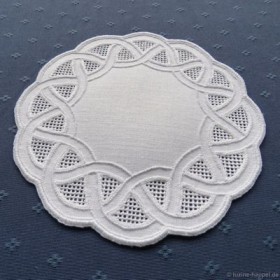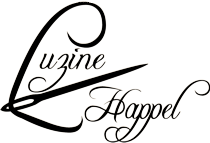The design, with a diameter of 18 cm, is transferred to the fabric. The linen used has a 16/cm thread count. (If you are interested in getting the design, please email me – there is a small fee.)
The lines are covered with Coral Knot stitches using coton à broder No. 20.
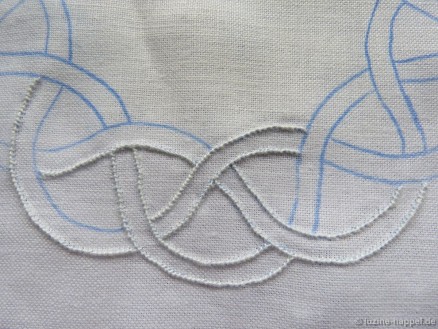 Please, on the back side of the piece, do not span the threads across intersections; rather, secure them. Threads carried across intersections will, in the end, be visible and distract from the overall charm of the finished doily.
Please, on the back side of the piece, do not span the threads across intersections; rather, secure them. Threads carried across intersections will, in the end, be visible and distract from the overall charm of the finished doily.
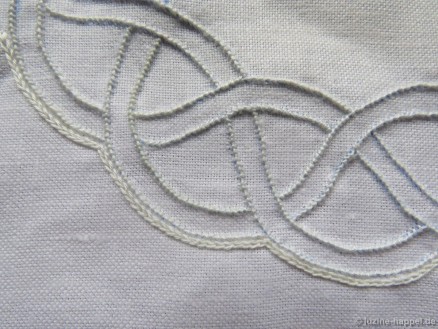 Using coton à broder No. 20, Chain stitches are worked a small distance from the Coral Knot stitches at the outside edge.
Using coton à broder No. 20, Chain stitches are worked a small distance from the Coral Knot stitches at the outside edge.
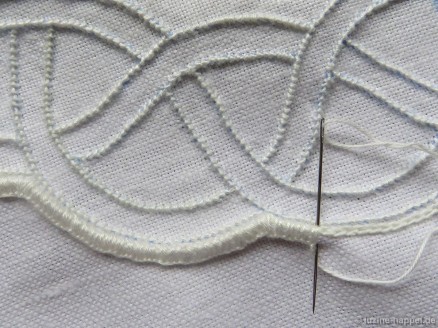 The Chain stitches are covered with densely worked Blanket stitches, also using coton à broder No. 20.
The Chain stitches are covered with densely worked Blanket stitches, also using coton à broder No. 20.
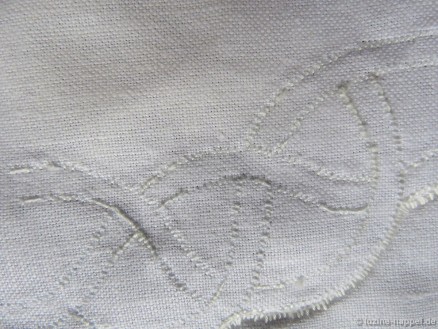 Using coton à broder No. 30, the small areas between the lines are outlined with Chain stitches.
Using coton à broder No. 30, the small areas between the lines are outlined with Chain stitches.
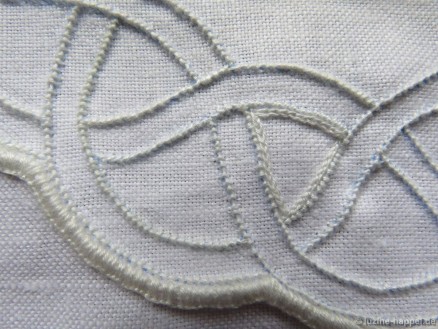 Inside these small areas, threads are withdrawn to establish an openwork grid.
Inside these small areas, threads are withdrawn to establish an openwork grid.
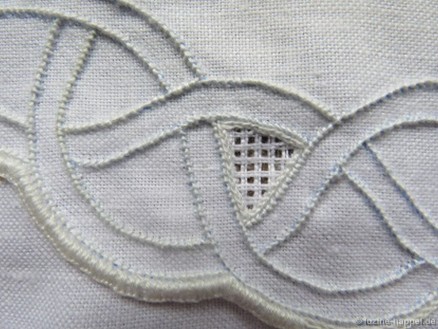 Cable stitches are worked into the grids using coton à broder No. 30. In each grid, the stitch should always run in the same direction.
Cable stitches are worked into the grids using coton à broder No. 30. In each grid, the stitch should always run in the same direction.
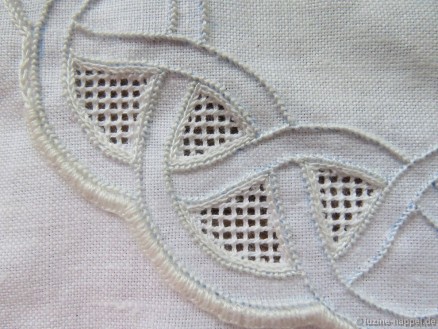 The finished embroidery was boiled, starched, and ironed.
The finished embroidery was boiled, starched, and ironed.
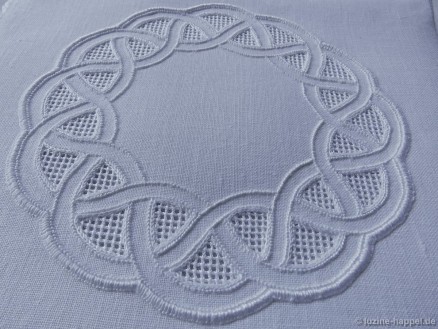 Then the piece was trimmed.
Then the piece was trimmed.
 The result is a sweet little doily. The same design can be used to make doilies of differing sizes. In addition, variations are possible.
The result is a sweet little doily. The same design can be used to make doilies of differing sizes. In addition, variations are possible.
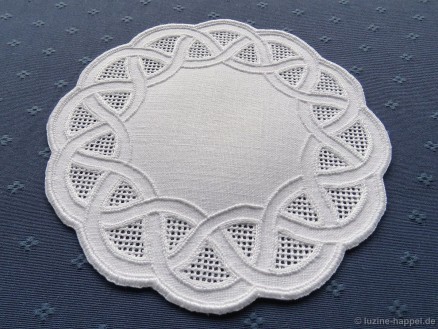 Years ago I worked a tea cloth with a similar design; it was rectangular, and I added a blue line of Chain stitches inside the double lines of the plait.
Years ago I worked a tea cloth with a similar design; it was rectangular, and I added a blue line of Chain stitches inside the double lines of the plait.
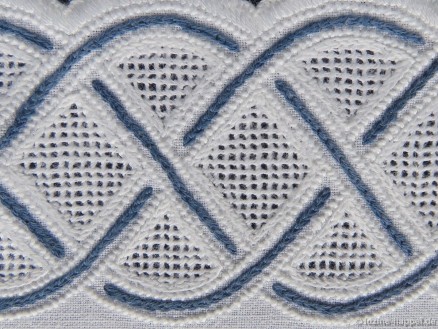 It looks so elegant displayed on a cloth of a matching colour.
It looks so elegant displayed on a cloth of a matching colour.
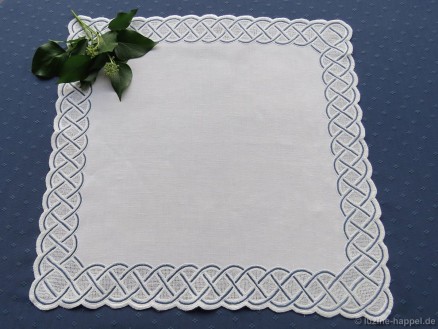 And with matching dishes and table napkins, it always garners admiration and compliments from guests.
And with matching dishes and table napkins, it always garners admiration and compliments from guests.
